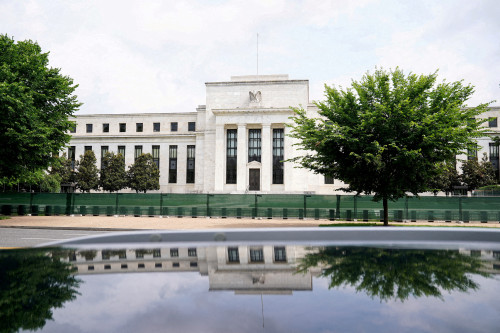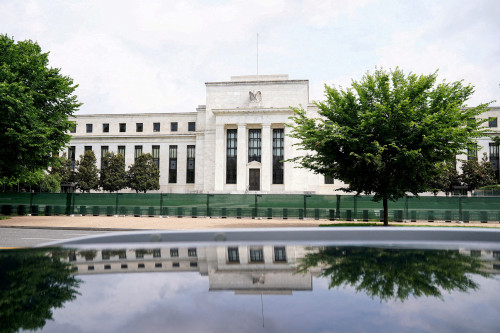By Davide Barbuscia
NEW YORK (Reuters) -Investors are betting harder on a September Federal Reserve interest rate cut after last month’s mild inflation bump, which indicated the pass-through from President Donald Trump’s sweeping import duties to goods prices has so far been limited.
July inflation numbers released on Tuesday came in largely within expectations, strengthening traders’ bets the Fed will start cutting rates at its next policy meeting in September, particularly after a weak employment report in July and sharp downward revisions to job figures for May and June.
“I think that the market coming in was quietly expecting a hotter number, and it didn’t,” said Andrew Szczurowski, co-head of the mortgage and securitized investment team at Morgan Stanley Investment Management.
“When you factor in the other side of their (the Fed’s) mandate, then all of a sudden it looks like they’re missing their labor target more than they’re missing their inflation target,” he said.
Rates futures traders increased bets on a 25 basis point interest rate cut in September after the data release, with the probability of a September cut rising to 98% against about 89% earlier on Tuesday, according to LSEG data.
Two-year Treasury yields, which tend to reflect expectations of changes in monetary policy, declined after the data and were last at 3.729%, about two basis points lower on the day.
The consumer price index rose 0.2% last month, in line with expectations, and rose 2.7% year on year, below consensus forecasts of 2.8%.
Trump used the subdued headline CPI to reinforce his claim that tariffs do not hit consumers, taking aim at Goldman Sachs economists for what he said were bad predictions on the tariff impact.
Joseph Lavorgna, counselor to Treasury Secretary Scott Bessent, said Tuesday’s inflation figures indicated that exporters were largely absorbing tariffs by cutting prices.
“Every month, we keep waiting for the inflation that doesn’t present itself, and then people say we need clarity. No, you’ve had six months in a row where the numbers have disappointed to the downside. Effectively, where you thought there would be inflation, there isn’t,” he said.
Excluding the volatile food and energy components, the CPI rose 0.3%, the biggest gain since January, after climbing 0.2% in June. The so-called core CPI increased 3.1% year-on-year in July after advancing 2.9% in June.
Tiffany Wilding, economist at bond manager PIMCO, said she expected core CPI to tick higher to a peak of 3.4% by year-end as tariff-related costs are passed on to consumers.
“It’s going to take time for these tariffs to really show up in earnest,” said Tom Porcelli, chief U.S. economist at PGIM Fixed Income. “Anyone waiting for this to show up in sort of one big move higher in any given month, that’s not how it’s going to be. It’s going to sort of trickle in,” he said.
The Fed will have further inputs from August inflation and labor data before its next rate-setting meeting.
The data came after Trump on Monday nominated economist E.J. Antoni as the new Bureau of Labor Statistics (BLS) commissioner, 10 days after firing the agency’s previous leader following a weak scorecard of the job market, accusing her without evidence of manipulating the figures.
Antoni has been critical of the BLS, an agency that has come under heightened scrutiny for the eroding quality of the data it produces.
(Reporting by Davide Barbuscia, additional reporting by Saeed AzharEditing by Marguerita Choy)



